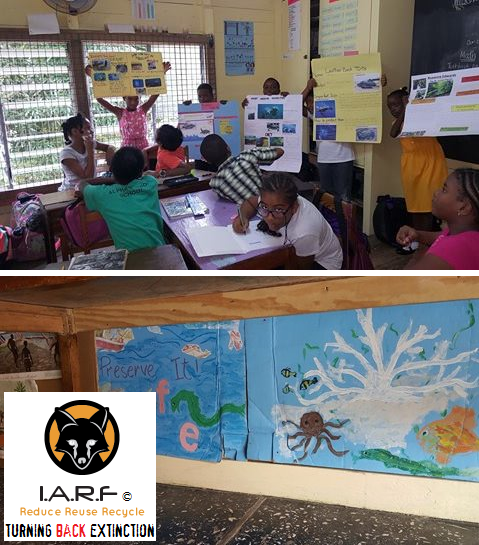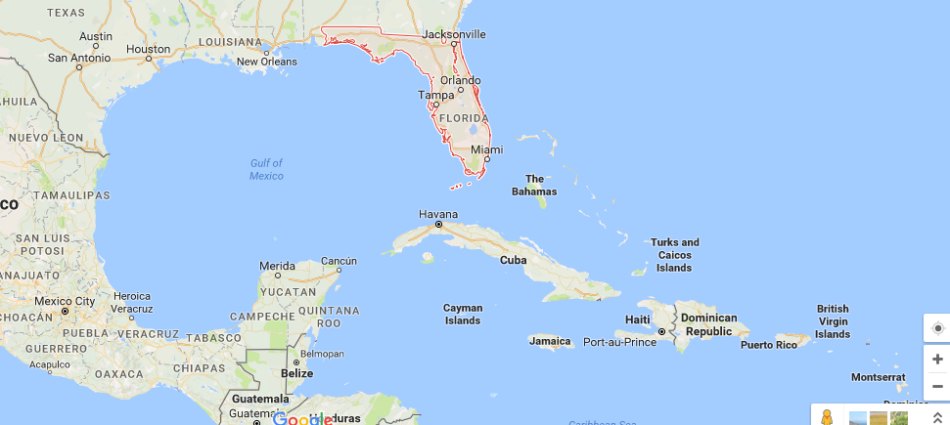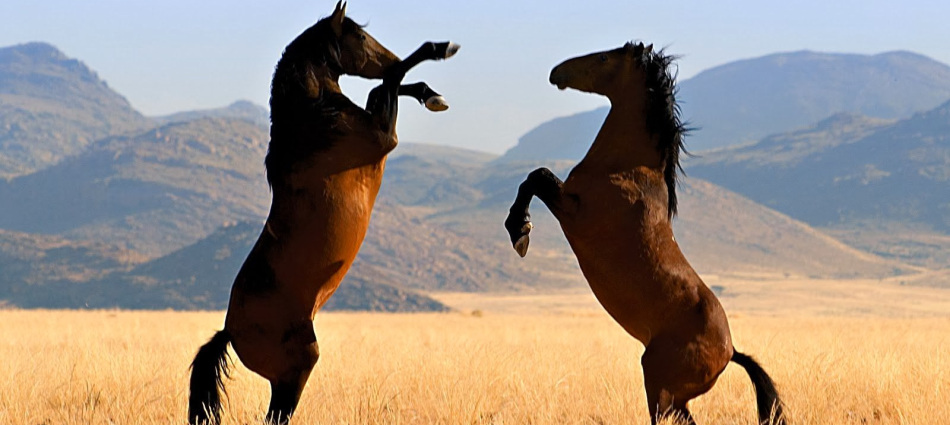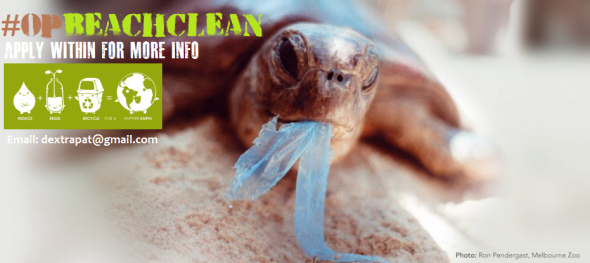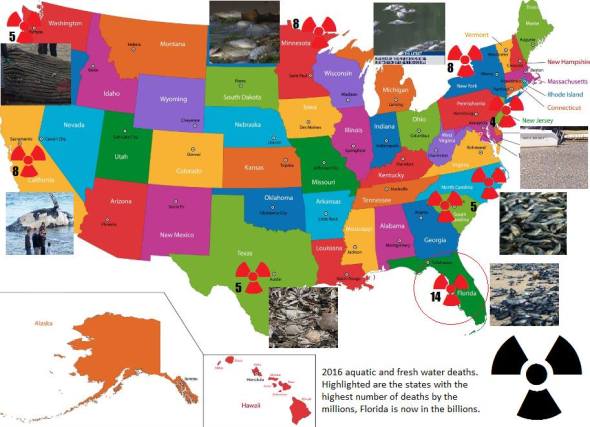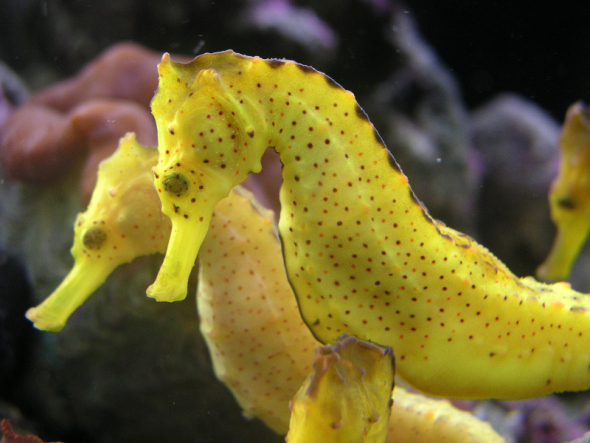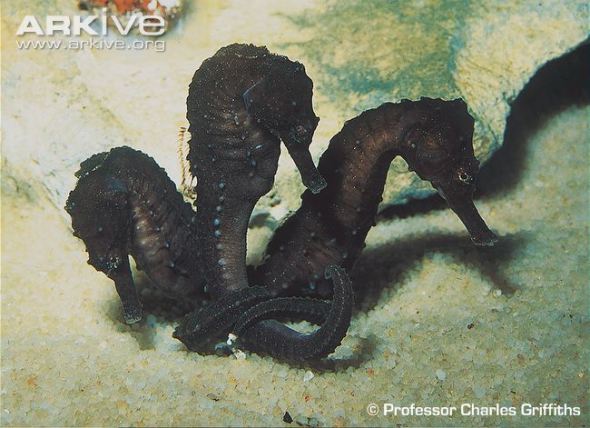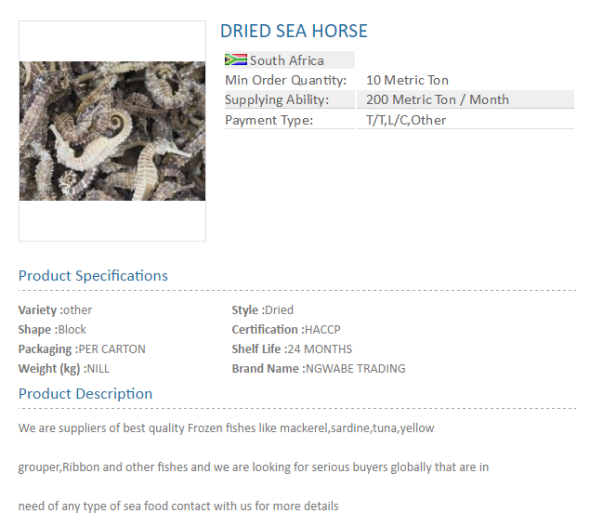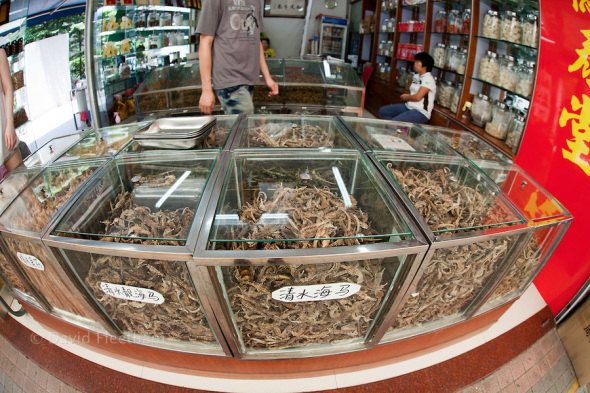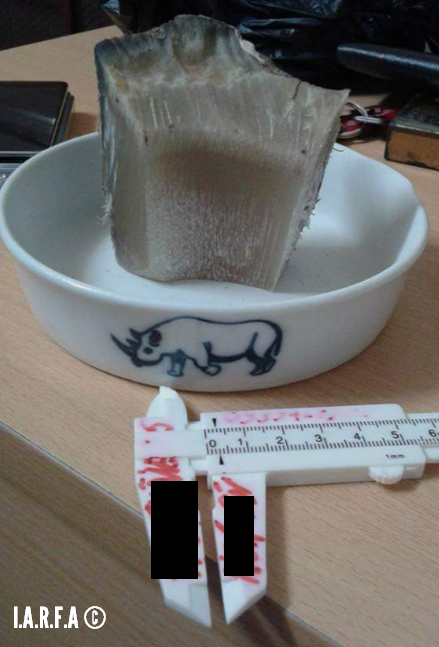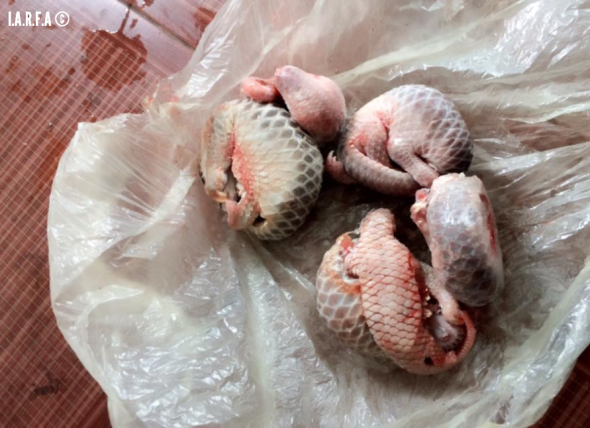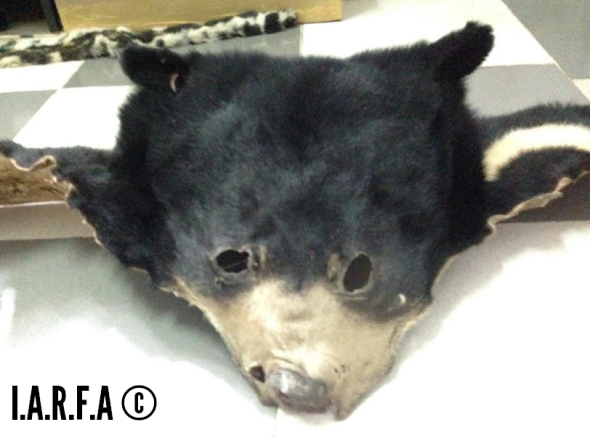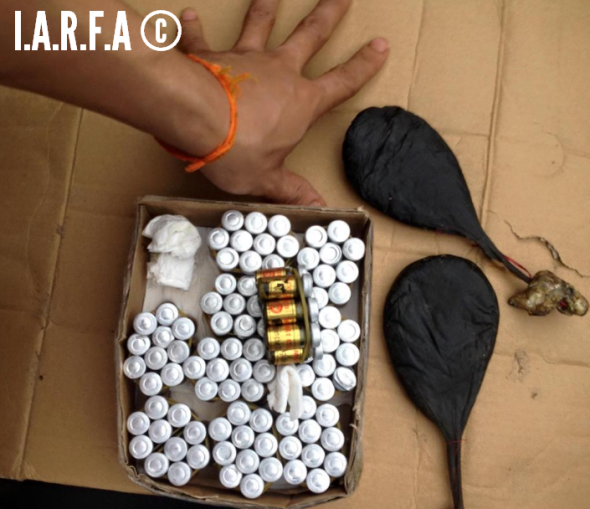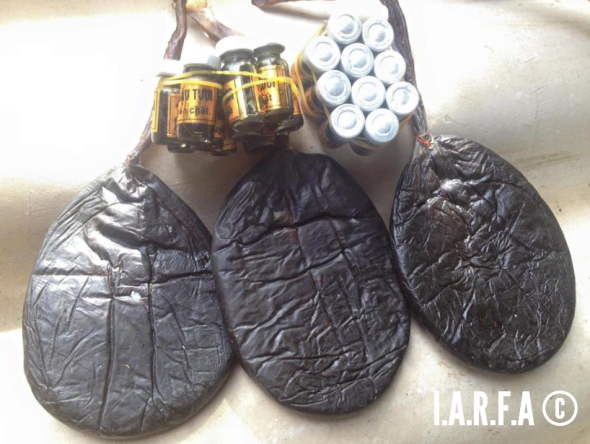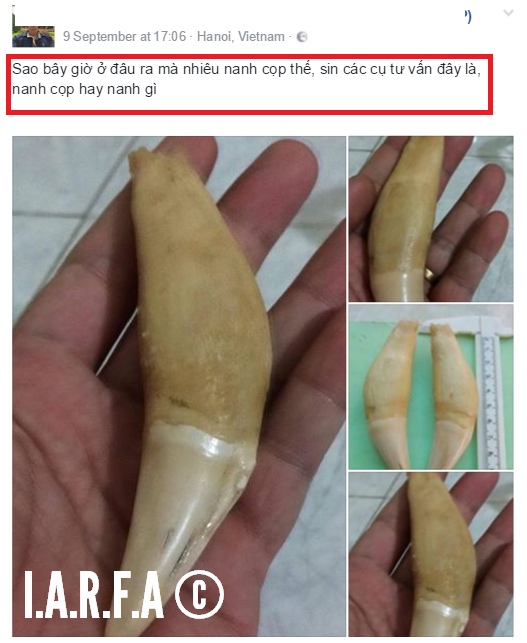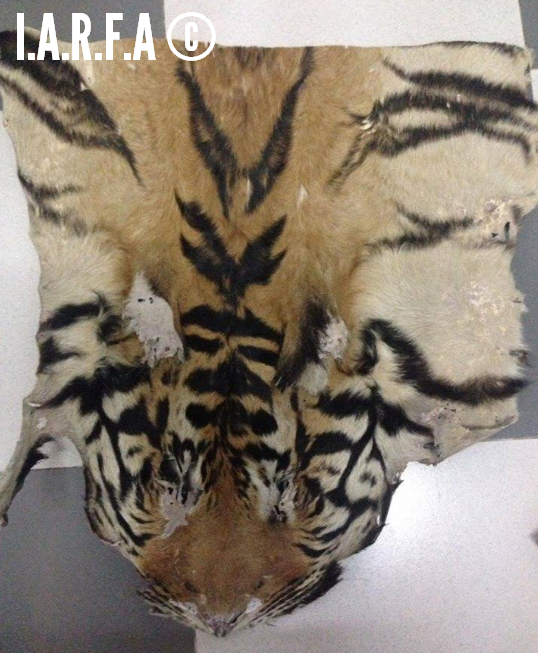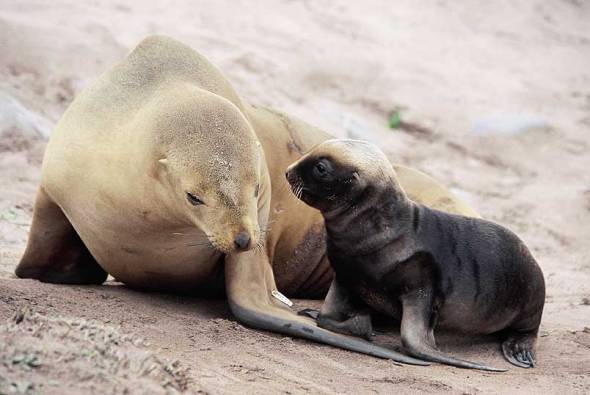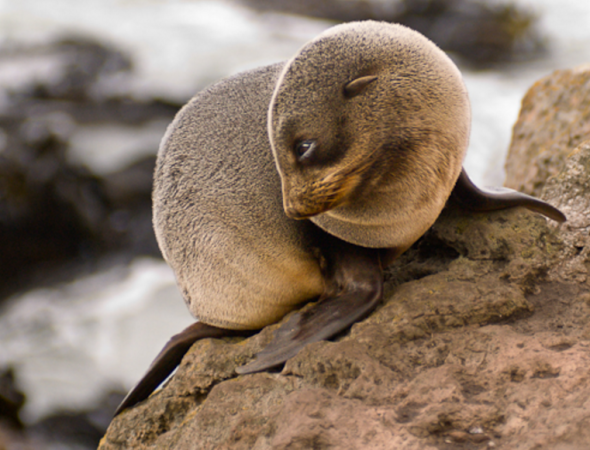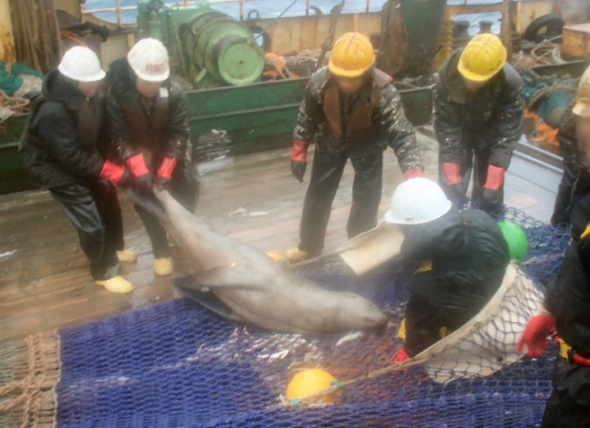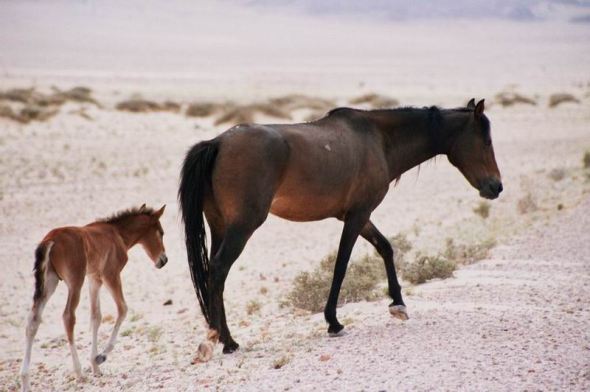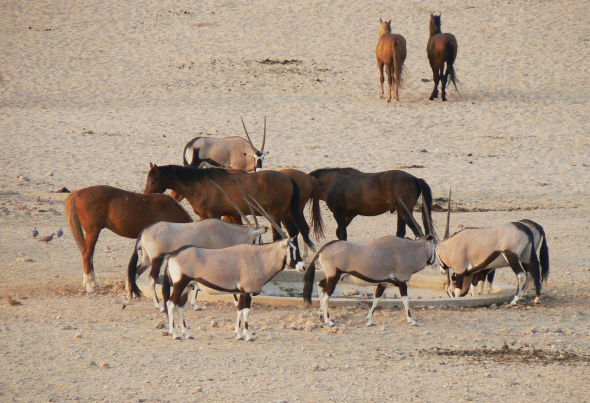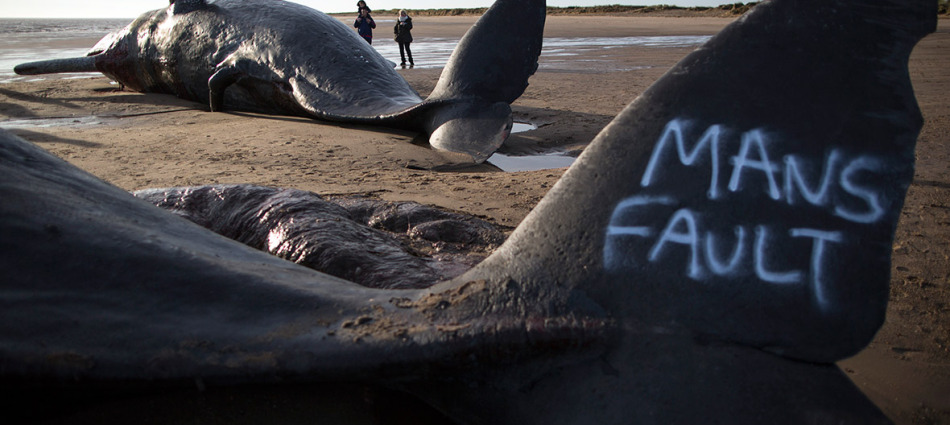
Image: One of numerous Sperm Whales that beached in England.
HOW CLEAN ARE THE UNITED STATES BEACHES, RIVERS AND LAKES?
The United States of America allegedly has a reputation for some of the worlds finest beaches, rivers and lakes. Well that’s what travel agencies want you to hear and read from the U.S. Since 2011 to 2017 in the United States of America there has been hundreds of reported fish, whale, dolphin and marine bird deaths (among other aquatic species.) The situation is now so out of control that should the U.S continue to lose fish at the rates seen below in the report from 2011-2017 larger marine fauna will begin dying of starvation. Extinction will occur!
Starvation has already been reported within some of the reports below relating to walruses, whales and even marine birds. Florida, Texas, California, New York and Missouri are ranking in the top five states to report mass aquatic deaths - Florida being the worst. I’m going to let you the reader be judge and jury of this report, after all it says it all. Each report can also be Googled too for authenticity. Below is a report relating to the state of U.S beaches, the high seas, rivers and lakes, and things aren’t looking too good, that’s for sure. America ranks as the number one country to report mass aquatic deaths than any other country on the planet.
This April, Saturday 22nd 2017 from 09:00am we are organizing an international beach cleaning operation code named (#OpBeachClean.) To get involved please click this Facebook link >here< and contact me in person on Facebook. Your message will be communicated to anyone of my devices and I’ll answer you as soon as possible.
Beach cleans have been organized in Greece, Viet Nam, Thailand, England, Australia, Oman, Netherlands and one in California, U.S. Please help and lets make this beach clean on Earth Day 22nd April a day to remember, not for us, but for our wildlife. Thank you.
2011
1. 1st January 2011 - 5,000+ Red-winged blackbirds & Starlings fall out of the sky dead in Beebe, Arkansas.
2. 1st January 2011 - 200,000+ Dead fish wash up on the shores of Arkansas River, Arkansas.
3. 2,000,000 (2 Million) Dead fish consisting of Menhayden, spots & Croakers wash up in Chesapeake Bay, Maryland & Virginia.
4. 4th January 2011 - Thousands of dead fish consisting of Mullet, Ladyfish, Catfish & Snook in Volusia County, Florida.
5. 4th January 2011 - 3,000+ dead Blackbirds found in Louisville, Kentucky.
6. 4th January 2011 - 500 Dead Red-winged blackbirds & Starlings in Louisiana.
7. 6th January 2011 - Hundreds of dead Grackles, Sparrows & Pigeons were found dead in Upshur County, Texas.
8. 14th January 2011 - 300 Blackbirds found dead on highway I-65 south of Athens in Alabama.
9. 21st January 2011 - Thousands of fish dead in Detroit River, Michigan.
10. 27th January 2011 - 200 Pelicans wash up dead on Topsail Beach in North Carolina.
11. 9th February 2011 - Thousands of dead fish wash ashore in Florida.
12. 11th February 2011 - Hundreds of dead birds found in Lake Charles, Louisiana.
13. 21st February 2011 - Big Freeze kills hundreds of thousands of fish along coast in Texas.
14. 23rd February 2011 - 28 baby Dolphins wash up dead in Alabama and Mississippi.
15. 8th March 2011 - Millions of dead fish in King Harbor Marina in California.
16. 28th March 2011 - Sei Whale washes up dead on beach in Virginia. [NB: Death toll never provided.]
17. 29th March 2011 - Over 1300 ducks die in Houston Minnesota.
18. 18th April 2011 - Hundreds of dead fish found in Ventura Harbour in Southern California.
19. 20th April 2011 - 6 Tons of dead Sardines found in Ventura Harbour in Southern California.
20. 22nd April 2011 - Leopard Sharks dying in San Francisco Bay.
21. 13th May 2011 - Dozens of Sharks washing up dead in California.
22. 13th May 2011 - Thousands of fish wash up dead on shores of Lake Erie in Ohio.
23. 17th June 2011 - About 750 fish found dead in River Des Peres in Missouri.
24. 28th June 2011 - 30 Dolphins wash up dead in the LowCountry, USA.
25. 29th June 2011 - Hundreds of fish turn up dead in South Georgia.
26. 9th July 2011 - Two 1000-pound Whales found dead on beaches in Indian River County, US.
27. 14th July 2011 - Large Quantities of large and small fish continue to wash up dead in Oklahoma.
28. 21st July 2011 - Lake full of dead fish in Louisiana.
29. 22nd July 2011 - Fish washing up dead on shores of North Falmouth, USA.
30. 1st August 2011 - Thousands of Fish die in Lake that turned blood red, in Texas. [NB: The blood red could have something to do with red algae blooms, the reports are sketchy.]
31. 1st August 2011 - Hundreds of Fish dead in Rio Grande River, New Mexico.
32. 14th August 2011 - Hundreds of Fish and Turtles dead in Pearl River, Louisiana.
33. 19th August 2011 - Dead Dolphins and Seals found on Oxnard Beach, in California.
34. During the month of August 2011 2 whales of unknown origin washed ashore in the U.S.
35. 17th September 2011 - Up to 400 Squid wash up dead on Blacks Beach in San Diego.
36. 20th September 2011 - Thousands of white bass turn up dead in Arkansas River in America.
37. 22nd September 2011 - Hundreds of Giant Squid Washing Ashore Dead on Orange County Beaches in America.
38. During the month of September 2011 2 whales of unknown origin washed ashore within the United States. [NB: Reports are sketchy, and the USFWS refuse to acknowledge my concerns.]
39. 21st October 2011 - Hundreds (Maybe Thousands) of dead fish along Briar Creek in Georgia.
40. 24th October 2011 - Thousands of dead fish in Little Wabash River in Illinois.
41. 28th October 2011 - 3 more Dolphins found dead in Mississippi. (14 Dead this month.)
42. 31st October 2011 - Oyster Die-off in Pensacola in America.
43. 31st October 2011 - 500 Songbirds dead in West Virginia in America.
44. During the month of October 2011 five whales stranded in the U.S of unknown origin. (NB: Reports are sketchy although confirmed.]
45. 2nd November 2011 - MILLIONS of fish killed by “Red Tide” along Texas coast in America.
46. 11th November 2011 - Massive Fish Kill in Lake Poway in California.
47. 17th November 2011 - Fish Kill affecting two miles of a creek in Western Iowa in America.
48. 27th November 2011 - Five Dolphins wash up dead in Mississippi.
49. During the month of November 2011 some 15 whales stranded in the U.S.
50. 15th December 2011 - Thousands of Birds die from “crash landing” in Utah.
51. 20th December 2011 - 400 Birds found dead in Davis County in USA.
52. 27th December 2011 - “Red Tide” killing fish in Florida.
2012
1. 1st January 2012 - 200 Blackbirds found dead in Arkansas USA.
2. 7th January 2012 - Thousands of Fish found dead in California.
3. 9th January 2012 - Dozens of Turtles found dead in Florida.
4. 14th January 2012 - 30 Dolphins beach, 20 dead in Cape Cod in America.
5. 85 Dolphins beached, 61 dead in Cape Cod in America.
6. 27th January 2012 - 12 Dolphins wash up dead in Louisiana.
7. 3rd February 2012 - 1,000 Fish found dead floating in two ponds in Virginia.
8. 3rd February 2012 - 100 Pigeons found dead in South Dakota.
9. 7th February 2012 - Dozens of dead Birds found on beach in Florida.
10. 14th February 2012 - UPDATE: 124 Dolphins have now beached and died in Cape Cod America. [[ SCROLL THROUGH ALL OTHER REPORTS PUBLISHED AND REVIEW THE PATTERNS HERE RELATING TO WHALE DEATHS AND THE MONTHS OF JAN, FEB AND MAR.]
11. 15th February 2012 - 100 dead birds found along highway in Maryland America.
12. During 2011 - Record number (335) of Sea Otters either found dead or ill along California coast in America.
13. 2nd March 2012 - Thousands of Jellyfish wash ashore in Texas.
14. 9th March 2012 - Dozens of birds drop dead in University grounds in Florida.
15. 20th March 2012 - Thousands of dead Fish found in River in Minnesota.
16. 29th March 2012 - 10,000 Geese and Waterfowl dead in Siskiyou County America. [NB: C.O.D never found.]
17. 30th March 2012 - Hundreds of Birds Killed in Hail storm in Texas.
18. 11th April 2012 - 14,000 Fish dead in Creek in Missouri.
19. 17th April 2012 - Thousands of fish (30 species) dead in a creek in Tennesse.
20. 25th April 2012 - 28,000 dead Fish found in River in Strongsville, America.
21. 25th April 2012 - 11,000 dead Fish found in River in Kettering, America.
22. 27th April 2012 - Mass Fish kill on Lake Elsinore in California.
23. 30th April 2012 - Hundreds of Bull RedFish found dead in Alabama.
24. 3rd May 2012 - Dead Fish are washing up on shore of Lake Houston in America.
25. 6th May 2012 - Mass Fish death found in Heritage Park Pond in Massachusetts.
26. 8th May 2012 - Hundreds of dead fish in Brake Lake, Perry County America.
27. 16th May 2012 - Fish kill in Arcadia Lake in Oklahoma.
28. 20th May 2012 - Hundreds of Fish found dead at Clear Lake in Minnesota.
29. 23rd May 2012 - 60,000 - 100,000 dead Fish in three Creeks in Maryland USA
30. 24th May 2012 - Hundreds of Fish found dead in Briar Creek in North Carolina.
31. 27th May 2012 - Entire Fish Farm stock to be killed after virus found for first time in waters of Washington State.
32. 29th May 2012 - Mass Fish death - 13,000 Fish found in Ohatchee Alabama.
33. 30th May 2012 - Thousands more Fish turning up dead in Maryland.
34. 5th June 2012 - Thousands of Dead fish found in Imperial Lakes in Florida.
35. 6th June 2012 - Over 10,000 dead Carp found in Blue Springs Lake, Missouri.
36. 120 Dolphins that died off Texas coast between November and March declared “unusual mortality event” America.
37. 20th June 2012 - Hundreds to Thousands of fish washing ashore dead on Sutherland Reservoir Nebraska.
38. 21st June 2012 - 150 Birds washing up dead or dying on East Florida beaches in America.
39. 21st June 2012 - Dead turtles washing ashore along Delaware and New Jersey coasts, scientists not sure why in America.
40. 22nd June 2012 - Fish kill on Lake Odessa in Louisa County America.
41. 23rd June 2012 - 67 Birds found dead at Kanaha Pond Wildlife Sanctuary Hawaii.
42. 25th June 2012 - Several thousand fish dead in a lake in Georgia America
43. 26th June 2012 - Fish kill in Wisconsin Counties in America.
44. 28th June 2012 - Fish die-off in Platte River in Nebraska.
45. 2nd July 2012 - 10,000 Fish dead in South Knoxville Pond in Tennessee America.
46. 3rd July 2012 - 2,300 dead Fish washed ashore on South River in Butts County, Georgia America.
47. 3rd July 2012 - Fish Kill: Catfish die-off on Lake Buffum near Fort Meade Florida.
48. 3rd July 2012 - Hundreds of Fish found floating dead in Upstate Lake South Carolina.
49. 3rd July 2012 - Major Fish kill: Hundreds of thousands of Fish dead in Lake Wichita Texas.
50. 4th July 2012 - Thousands of Fish found dead on Dexter City Lake in Missouri America.
51. 5th July 2012 - Over 20 dead Birds (Egrets) found in Rockport Texas.
52. 5th July 2012 - Thousands of Fish found dead in James River in Lamoure North Dakota.
53. 5th July 2012 - Fish kill on Roy Lake in South Dakota.
54. 5th July 2012 - Fish kill on Century Village Lakes in Florida.
55. 6th July 2012 - Fish kill in Patoka River, Indiana.
56. 6th July 2012 - Mass Fish kill on Salt River in Arizona.
57. 6th July 2012 - Many thousands of dead Fish found in Silver Lake, Delaware America.
58. 7th July 2012 - Over 50 Ducks and Geese found dead in Ohio, leaving locals baffled, America.
59. 9th July 2012 - “Catastrophic” Fish kill on Geneva Lake, also over 200 Pike dead on Fountain Lake in Minnesota America.
60. 10th July 2012 - Lobster mass die-off continues in Connecticut America.
61. 10th July 2012 - Dozens of dead Birds found in Illinois America.
62. 11th July 2012 - 19,000 Fish dead in Lake Odessa America.
63. 11th July 2012 - 58,000 Fish kill on the Des Moines River in Iowa America.
64. 12th July 2012 - Thousand of dead fish found on the Vermilion River in Illinois America.
65. 12th July 2012 - 6,500 dead Fish in Twin Lakes in North Carolina America.
66. 12th July 2012 - Tens of thousands of Fish dying and many birds dying to in Horicon Marsh America.
67. 17th July 2012 - MILLIONS of “weird”, and “unknown” Crab like creatures wash onto beaches, either dead or dying in Hawaii.
68. 19th July 2012 - Hundreds of Frogs found dead in Chesterfield Lake, Missouri, America.
69. 20th July 2012 - Thousands of dead Fish line beaches in Piney Point, Maryland, America.
70. 20th July 2012 - 300 Birds found dead on Agate Beach in Oregon, America.
71. 21st July 2012 - Thousands of fish washing ashore dead on Lake Elsinore in California, America.
72. 22nd July 2012 - Massive Fish kill on Lake Erie in Ohio, America.
73. 23rd July 2012 - Thousands of dead Fish wash ashore on Volusia’s beaches, Daytona, America.
74. 23rd July 2012 - Fish kill found on Big Sandy Lake in Minnesota, America.
75. 26th July 2012 - Fish kill in a canal in Plantation, Florida, America.
76. 29th July 2012 - Thousands of dead Fish found in the Colorado River, America.
77. 3rd August 2012 - Massive Fish kills right across America.
78. 3rd August 2012 - Massive Bird kill on beaches of Bandon, Oregon, America.
79. 3rd August 2012 - 3,000 Fish found dead on Petit Jean River in Arkansas, America.
80. 5th August 2012 - 40,000 Sturgeon and thousands of other Fish dead in Iowa and other Central States in America.
81. 7th August 2012 - Large Fish kill on the Neuse River in North Carolina, America.
82. 7th August 2012 - 900 Birds found dead in Minnesota, America.
83. 9th August 2012 - 20,000 dead Fish in Lake Contrary, Missouri, America.
84. 9th August 2012 - Hundreds of Crabs washing ashore dead on Tiana and Shinnecock Bay in America.
85. 13th August 2012 - Hundreds of Thousands of dead Fish on beaches from Matagorda to Galveston, Texas.
86. 15th August 2012 - Dozens of Birds fall from sky dead in New Jersey, America.
87. 15th August 2012 - 5,000 Fish found dead in Sugar Creek, Ohio, America.
88. 16th August 2012 - Fish kill in Wolf Creek, Iowa, America.
89. 17th August 2012 - Lots of various Fish and Stingrays washing up dead off Myrtle Beach in South Carolina, America.
90. 17th August 2012 - 1 MILLION Fish have been killed by “red tide” in Texas, America.
91. 20th August 2012 - 20,000 Fish found dead in Contraband Bayou, Louisiana, America.
92. 20th August 2012 - Fish kill in Highland Park in Texas, America.
93. 20th August 2012 - Thousands of Fish continue to die in Neuse River in North Carolina, America.
94. 20th August 2012 - Major Fish kill on the shores of Anson Lake, Texas, America.
95. 22nd August 2012 - Thousands of dead Fish found in Cuyahoga River, Ohio, America.
96. 30th August 2012 - “Significant” fish kill on Tuscarawas River in NEW PHILADELPHIA, America.
96. 30th August 2012 - Die-off of Whitefish in Eastern Idaho Rivers a “mystery”, America.
97. 2nd September 2012 - 17 Whales dead after 22 beach themselves in Florida, America.
98. 4th September 2012 - Thousands of dead Fish found in Broadkill River - “The River smelled like dead fish” - in Delaware, America.
99. 4th September 2012 - Fish kill in Bayou Casotte in Jackson County, America.
100. 4th September 2012 - Thousands of dead Fish along Bayou Lafourche in Louisiana, America.
101. 5th September 2012 - Tens of thousands of Nutria Rats washed up dead on Mississippi beaches in America.
102. 5th September 2012 - Large Fish kills reported around Louisiana in America.
103. 8th September 2012 - Fish kill in San Carlos Lake in Arizona, America.
104. 10th September 2012 - Hundreds of dead Fish litter Lake Vista in New Orleans, America.
105. 12th September 2012 - MILLIONS of dead fish in the Salton Sea in California, America.
106. 12th September 2012 - Thousands of dead Fish in Arrowhead Lakes, Arizona, America.
107. 12th September 2012 - Large Fish kill from New Smyrna Beach to Oak Hill, Florida, America.
108. 14th September 2012 - Hundreds of dead Fish found in a creak in Arlington, America.
109. 14th September 2012 - 131,000 Fish killed due to disease in New York State, America.
110. 17th September 2012 - Mass Fish kill in Lakeview Park, Corpus Christi in America.
111. 19th September 2012 - Large Fish kill in Lake Auburn, Maine, America.
112. 23rd September 2012 - Last remaining 20 Ducks found dead in Arden Park - No Ducks left, Arizona, America.
113. 24th September 2012 - Large Fish kill, causing complete wipeout of Fish in North Sterling Reservoir, Colorado, America.
114. 25th September 2012 - Hundreds of Fish found dead in the Neuse River, North Carolina, America.
115. 28th September 2012 - Ongoing Fish kill caused by algea at Roosevelt Lake, Arizona, America.
116. 28th September 2012 - Massive Fish kill in Harvey’s Run River, Pennsylvania in America.
117. 4th October 2012 - Fish kill caused by “Red Tide” on Sarasota Beaches, Florida in America.
118. 7th October 2012 - 150 dead Birds found in Chicago during September. A 50 Percent increase over August. America.
119. 9th October 2012 - Massive Fish kills caused by Red Tide along Florida coast, America.
120. 12th October 2012 - Mass death of Hammerhead Shark pups found in Hawaii.
121. 16th October 2012 - Fish kill in Dalton Creek, Georgia, America.
122. 17th October 2012 - “Significant” Bass die-off, thousands dead in Dickinson County lakes, Iowa, America.
123. 17th October 2012 - Fish die-off could be in the MILLIONS in Neuse River, North Carolina, America.
124. 19th October 2012 - A Virus is killing Doves all across the Permian Basin, America.
125. 22nd October 2012 - Tens of thousands of Gizzard Shad Fish dead in Oneida Lake, New York State, America.
126. 22nd October 2012 - Thousands of dead Fish scattered along Collier beaches in Florida, America.
127. 23rd October 2012 - Massive Scallop die-off from Red Tide in America.
128. 25th October 2012 - 900+ dead Birds wash ashore on Sleeping Bear Dunes National Lakeshore, Michigan, America.
129. 26th October 2012 - Fish kill in Prairie Creek, Blairstown, America.
130. 31st October 2012 - 15,000+ Fish found dead on Lake Madeline in Texas, America.
131. 4th November 2012 - 700 Waterbirds found dead along shore of Lake Michigan in America.
132. 7th November 2012 - Fish kill found along a 7 mile stretch of Bradford Branch in Ohio, America.
133. 8th November 2012 - Die-off of spawning Salmon in Longfellow Creek, Seattle, America.
134. 16th November 2012 - Thousands of dead gizzard shad Fish found dead on Lake Erie in New York, America.
135. 20th November 2012 - 100 dead starlings found on road baffles scientists in Missouri, America.
136. 24th November 2012 - 26 Turtles die from disease during past few months in West Virginia, America.
137. 1st December 2012 - Catfish die-off near Marco Island in Florida, America.
138. 2nd December 2012 - 50 birds found dead on road in Collin County, Texas, America.
139. 3rd December 2012 - Hundreds of dead Carp washed up in Pinto Lake, California, America.
140. 6th December 2012 - Thousands of Fish found dead and dying on Kiawah Island, South Carolina, America.
141. 11th December 2012 - “Dead Fish all over the place” near giant sinkhole in Louisiana, America.
142. 11th December 2012 - Thousands of Squid wash ashore dead in California, America.
143. 12th December 2012 - 6 Dolphins wash ashore dead during past month in Gavelston, Texas, America.
144. 18th December 2012 - Die-off of Songbirds in Sonoma County, California, America.
145. 27th December 2012 - Thousands of dead Fish washing ashore in Sarasota and Charlotte, America.
146. 31st December 2012 - 300 Birds drop dead out of the sky in Tennessee, America.
2013
1. 4th January 2013 - Thousands of dead Sardines washing ashore on Sanibel Island, Florida, America.
2. 4th January 2013 - Mass Fish kill in the Boca Grande Causeway, Florida, America.
3. 4th January 2013 - Several thousand dead Fish found along the shores of Altus-Lugert Lake, Oklahoma, America.
5. 11th January 2013 - Hundreds of thousands of dead Fish washed up on Masonboro Island in America.
6. 11th January 2013 - Thousands of dead Birds are washing up on Michigan’s shoreline in America.
7. 15th January 2013 - Thousands of dead Fish washed up on Pawleys Island, in South Carolina, America.
8. 15th January 2013 - 30+ Birds found dead in Duson, Louisiana, America.
9. 16th January 2013 - 2,000 Fish found dead in Grand Island Lake, Nebraska, America.
10. 17th January 2013 - 40,000 dead Fish wash ashore for 2nd time in a week in South Carolina, America.
11. 17th January 2013 - Countless number of dead Fish wash ashore on Siesta Public Beach, Florida, America.
12. 18th January 2013 - Thousands of dead Fish continue to wash ashore on Sarasota beaches in Florida, America.
13. 21st January 2013 - Fish kill on the shores of Anna Maria Island in America.
14. 30th January 2013 - Fish kill caused by algae bloom at Possum Kingdom Lake, Texas, America.
15. 30th January 2013 - 1 whale died, location is unknown.
16. 6th February 2013 - Thousands of Tilapia Fish found dead in Tempe Town Lake, Arizona, America.
17. 12th February 2013 - Thousands of Fish killed by chlorinated water in San Mateo Creek, California, America.
18. 14th February 2013 - Thousands of Fish found dead in Suck’s Lake, Nebraska, America.
19. 14th February 2013 - Thousands of dead Lobsters, Starfish, Clams and Skates wash ashore in Massachusetts, America.
20. 24th February 2013 - Thousands of Fish found dead in Cuyahoga River, Ohio, America.
21. 27th February 2013 - Thousands of Fish wash up dead onto beaches in Florida, America.
22. 28th February 2013 - 100 Manatees killed by Red tide this year in Florida, America.
23. 28th February 2013 - 150 Birds found dead in Arlington, Texas, America.
24. During the month of February 2013 a 5 sperm whales washed ashore in American waters, locations again are unknown.
25. 1st March 2013 - 1 Million fish dead so far this year in Lake Erie, America.
26. 6th March 2013 - Dead Fish litter the Payette River in Idaho, America.
27. 6th March 2013 - Fish kill in Baffin Bay has Scientists concerned, Texas, America.
28. 11th March 2013 - Fish kill at Walborn Reservoir in Ohio, America.
29. 12th March 2013 - Fish kill including dead Ducks along Union Ship Canal, New York, America.
30. 13th March 2013 - Hundreds of dead Fish found in Stansbury Park Lake, Utah, America.
31. 14th March 2013 - 100+ Pelicans dead during past 2 months “baffling biologists” in Florida, America.
32. 20th March 2013 - Fish kill on the Brazos River in Texas, America.
33. 21st March 2013 - Hundreds of Fish found dead after Bleach spill in Rocky Creek, Augusta, America.
34. 26th March 2013 - Many Fish kills reported along the Mississippi River, America.
35. 28th March 2013 - 213 Manatees dead so far this year in Florida, America.
36. During March, 23 Whales and Dolphins washed up dead in various countries around the World. 5 of them in America.
37. 1st April 2013 - High number of deaths of Sea Lion pups washing up in California, America.
38. 3rd April 2013 - Hundreds of dead Fish found floating along Rock River in Illinois, America.
39. 3rd April 2013 - Thousands of Fish wash up dead on Lake Erie shores in Buffalo, America.
40. 4th April 2013 - Update: 1,100 Sea Lions have beached so far this year in America.
41. 7th April 2013 - Thousands of dead Fish found washed ashore in Cleveland, America.
42. 12th April 2013 - MILLIONS of dead Fish wash ashore on Lake Erie, America.
43. 13th April 2013 - Thousands of Fish dying at the Big Eau Pleine Reservoir, Wisconsin, America.
44. 12th April 2013 - 200,000 Salmon killed in Elwha River, Washington State, America.
45. 17th April 2013 - Thousands of Birds drop dead from sky at Army base in Utah, America.
46. 19th April 2013 - Hundreds of dead Fish found in a lake at Sylvan Heights, Pennsylvania, America.
47. 26th April 2013 - Hundreds of Birds dead from Spring Snowstorm in Colorado, America.
48. 29th April 2013 - INFO: Seal Pups continue to wash up in California close to death. 1,400 so far in 2013, America.
49. 30th April 2013 - Fish kill at Eagles Mere Lake a mystery in Pennsylvania, America.
50. During April, 24 Whales and Dolphins washed up dead in various countries around the World. 3 stranded in America. Location is again unknown.
51. 2nd May 2013 - Fish kill at Pipestem Reservoir in North Dakota, America.
52. 2nd May 2013 - Several hundred dead Fish in a lake baffles officials in Nebraska, America.
53. 3rd May 2013 - Thousands of dead Fish found in Indian River Lagoon, Florida, America.
54. 3rd May 2013 - Mass Fish kill found in Laurinburg, North Carolina, America.
55. 3rd May 2013 - 582 Manatees have died so far this year in Florida, America.
56. 6th May 2013 - Fish kill in Harlan Creek, Kentucky, America.
57. 6th May 2013 - Fish kill at Delaware Lake, Ohio, America.
58. 6th May 2013 - Hundreds of dead Fish wash up on Beaver Lake, Minnesota, America.
59. 8th May 2013 - 100+ dead Birds fall from sky in Danville & Pittsylvania, America.
60. 9th May 2013 - Fish kill in Tygart Lake, West Virginia, America.
61. 9th May 2013 - Hundreds of dead Fish found in Bristol Pond in Connecticut, America.
62. 13th May 2013 - Hundreds of Fish washing up dead every day in Mobile Bay, Alabama, America.
63. 20th May 2013 - Major Fish Kill in the Big Eau Plaine reservoir, Wisconsin, America.
64. 21st May 2013 - Large Fish kill on the Pinnebog River in Michigan, America.
65. 22nd May 2013 - Hundreds of White Bass found dead in Lake Springfield, Illinois, America.
66. 24th May 2013 - Hundreds of dead Fish found in Rocky Fork Lake in Ohio, America.
67. 24th May 2013 - Hundreds of dead Fish found in Ottawa River in Ohio, America.
68. 24th May 2013 - Thousands of Bull Redfish found floating dead in Breton Sound, Louisiana, America.
69. 25th May 2013 - 30 Fish kills happened during winter in North Dakota Lakes, America.
70. 26th May 2013 - Several Hundred Fish found dead on banks of De Queen Lake in Arkansas, America.
71. 28th May 2013 - Large Fish die-off in Irondequoit Bay in New York, America.
72. 31st May 2013 - Dead Fish litter a reservoir along with garbage in Mississippi, America.
73. 4th June 2013 - Fish kills worry residents on Padre Island, Texas, America.
74. 5th June 2013 - Thousands of Fish die in Quartz Lake, Alaska, America.
75. 5th June 2013 - Hundreds of dead Fish found in Jamestown Dam, North Dakota, America.
76. 10th June 2013 - Fish kill a “mystery” at Lake Mead in Nevada, America.
77. 10th June 2013 - Thousands of dead Fish found in West Pond, Texas, America.
78. 10th June 2013 - 350,000 Fish have died since beginning of year in Lugert-Altus Lake. “NO FISH LEFT”, Oklahoma, America.
79. 14th June 2013 - Fish kill a “mystery” at East Park Pond in El Dorado, Kansas, America.
80. 14th June 2013 - Thousands of dead White Bass found in Cave Run Lake, Kentucky, America.
81. 15th June 2013 - Thousands of Carp found dead in Milford reservoir, Kansas, America.
82. 15th June 2013 - Meadow Grounds Lake in McConnellsburg Drained and Full of Dead Fish, Pennsylvania, America.
83. 16th June 2013 - 111 Manatees, 300 Pelicans and 46 Dolphins have died since last summer in Indian River Lagoon. With 1 Dolphin turning up dead everyday last week. Florida, America.
84. 17th June 2013 - Hundreds of Fish turning up dead in a pond has locals “puzzled” in Temple, Texas, America.
85. 18th June 2013 - Fish kill in Lake Texoma, Oklahoma and Texas, America.
86. 19th June 2013 - Thousands of Fish turn up dead in a lake in Sarasota, Florida, America.
87. 19th June 2013 - Thousands of Dead Fish floating and wash ashore in Nassawadox Creek, Virginia, America.
88. 20th June 2013 - Hundreds of dead Fish found in Hirsch Lake, New Jersey, America.
89. 20th June 2013 - Fish kill in a Lake in Addison County, Vermont, America.
90. 20th June 2013 - Fish die off washes up on beaches in Kirkland, Washington, America.
91. 20th June 2013 - Unusual number of Birds dying with 1 Resident reporting 50 dead Birds in Billings, Montana, America.
92. 21st June 2013 - Thousands of dead Fish found along 50 mile stretch of Salt Fork River is “catastrophic”, Oklahoma, America.
93. 24th June 2013 - Hundreds of Carp turn up dead in Lakes in Iowa and Dane counties, America.
94. 25th June 2013 - Fish kill reported in Ashland Creek, Oregon, America.
95. 26th June 2013 - 160,000 Fish died in a hatchery due to an “alleged” failed pump in Montana, America.
96. 27th June 2013 - Hundreds to thousands of dead Fish piling up on the shores of Eagle Nest Lake in New Mexico, America.
97. 27th June 2013 - Millions of Pacific Krill [“largest die-off in recent history”] “mysteriously” wash up dead on beaches in California, America.
98. 28th June 2013 - Hundreds of Fish die from being “too warm” in Ballaine Lake, Alaska, America.
99. 28th June 2013 - Large Fish kill found in Charles River, Massachusetts, America.
100. 29th June 2013 - Fish kills currently on all lakes in Minnesota, America.
101. 1st July 2013 - Fish die off (worst in years) on Canandaigua Lake, New York, America.
102. 2nd July 2013 - Thousands of fish found dead in Chetek Lake, Wisconsin, America.
103. 3rd July 2013 - Fish kills reported on several of the Finger Lakes in New York, America.
104. 4th July 2013 - 80+ TONS of dead fish removed from Mississippi Sound, America.
105. 6th July 2013 - 1,200 lbs of Bluefish “mysteriously” washed up dead in Shinnecock Bay, America.
106. 9th July 2013 - 2 Whales dead after beaching on Jupiter Island in Florida, America.
107. 10th July 2013 - Hundreds of dead fish washing up along Neuse River in N.Carolina, America.
108. 10th July 2013 - 200,000+ fish have died due to “alleged pump failure” in Washington, America.
109. 11th July 2013 - Hundreds of dead fish found in a creek in Colonial Heights, Virginia, America.
110. 13th July 2013 - Die off of Chinook salmon “due to heat wave” in John Day River, Oregon, America.
111. 17th July 2013 - 600 fish dead from “heat and low water” in reservoir in Utah, America.
112. 18th July 2013 - Large fish kill washing up on lake Michigan in America.
113. 18th July 2013 - Thousands of fish dead from “lack of rain” in Sugar Lake, Missouri, America.
114. 19th July 2013 - Hundreds of fish turning up dead in Holter Lake, Montana, America.
115. 20th July 2013 - 3,000 fish found dead in a creek in Madison County, Ohio, America.
116. 22nd July 2013 - Large fish kill at Grand Lake, St Marys, Ohio, America.
117. 22nd July 2013 - Hundreds of dead fish found in Lake George, Massechusetts, America.
118. 23rd July 2013 - Hundreds of fish have died in a park pond in Youngstown, Ohio, America.
119. 24th July 2013 - Hundreds of dead fish found in Provo River, Utah, America.
120. 27th July 2013 - 6 Dolphins wash up dead during past week along New Jersey shoreline, America.
121. 27th July 2013 - 10,000 dead fish found in Lake Ariel, Pennsylvania, America.
122. 28th July 2013 - 1100 King Salmon found dead in a river in Petersburg, Alaska, America.
123. 30th July 2013 - 5,000 fish found dead in Savannah River, Columbia County in America.
124. 31st July 2013 - Thousands of dead fish, stingrays, crabs and shrimp have washed ashore this month on Mississippi beaches in America.
125. 2nd August 2013 - Hundreds of fish found dead in Lower Owens River in California, America.
126. 3rd August 2013 - Hundreds of fish found dead in Assabet river in Massachusetts, America.
127. 3rd August 2013 - 4 more Dolphins wash ashore dead on beaches in Jersey, America.
128. 7th August 2013 - 13 Dolphins wash ashore dead during past week in Virginia, America.
129. 11th August 2013 - Mass fish kill found again in Neuse River in N.Carolina, America.
130. 15th August 2013 - 1000 dead fish found floating in National Mall Pond in Washington DC, America.
131. 16th August 2013 - UPDATE INFO: Many thousands of seal pups died “mysteriously” during May in California, America.
132. 20th August 2013 - 19 Turtles found dead in Vermilion County parks, Illinois, America.
133. 20th August 2013 - Thousands of fish are dead in Bayou Casotte, Mississippi, America.
134. 20th August 2013 - 25 dead dolphins wash up this past weekend along coast in Virginia, America.
135. 21st August 2013 - Hundreds of dead fish found in Agoura Hills Lake, California, America.
136. 21st August 2013 - UPDATE: 300 Dolphins have washed ashore dead this summer along east coast of America.
137. 22nd August 2013 - 30,000 dead fish along a 4 mile stretch of Panther Creek in Illinois, America.
138. 26th August 2013 - 3 more dolphins wash up dead off coast of Jersey, America.
139. 27th August 2013 - 100 % of Oyster beds dead in St. Lucie River, due to river being 100 % toxic, Florida, America.
140. 28th August 2013 - Thousands of fish turn up dead in a pond off Iowa river, America.
141. 29th August 2013 - Thousands of Ducks dying ‘due to disease’ in Klamath Basin, Oregon, America.
142. 30th August 2013 - 10,000 dead salmon found scattered along Lake Koocanusa in Montana, America.
143. 6th September 2013 - 5,000 dead fish found in a lake in New Mexico, America.
144. 6th September 2013 - 2,000 lbs of fish suddenly die in Atascadero Lake, California, America.
145. 12th September 2013 - Thousands of fish and other sealife dead after molasses spill in Honolulu, America.
146. 17th September 2013 - 25,000 Trout to be destroyed due to outbreak of disease in New Jersey, America.
147. 18th September 2013 - Fish kills due to alae blooms plague Indian River Lagoon in Florida, America.
148. 19th September 2013 - More dolphins continue to wash up dead along coast in Virginia, America.
149. 24th September 2013 - Hundreds of dead fish wash up on banks of Spoon River in Illinois, America.
150. 25th September 2013 - Thousands of fish found dead in a creek in Texas, America.
151. 27th September 2013 - Massive fish die off ‘due to algae’ in Sierra County reservoir, California, America.
152. 29th September 2013 - 4 major Fish kills have occured this month in Iowa, America.
153. 1st October 2013 - 74 very large Walleye fish found washed up dead along Lost Island Lake, Iowa, America.
154. 3rd October 2013 - MILLIONS of dead fish washing up along Neuse and Tar-Pamlico rivers in Carolina, America.
155. 3rd October 2013 - Thousands of Swallows dead from ‘bad weather’ has ‘stunned wildlife experts’ in Oregon, America.
156. 8th October 2013 - 14 Dolphins wash ashore dead during past week in New Jersey, America.
157. 8th October 2013 - Masses of dead fish continuing to wash up along Neuse and Pamlico rivers in Carolina, America.
158. 13th October 2013 - 2 fish kills reported in rivers in Iowa, America.
159. 14th October 2013 - Another fish kill due to red tide in Indian River Lagoon, Florida, America.
160. 14th October 2013 - Thousands of shellfish wash ashore dead ‘causing concern’ in Milford, Connecticut, America.
161. 15th October 2013 - 18 Dolphins and 5 Turtles wash ashore dead - ‘more than in a whole year’ along Delaware coast in America.
162. 18th October 2013 - Thousands of fish dead in dried up river channel in Oregon, America.
163. 18th October 2013 - Major fish kill in a lake in Englewood, Florida, America.
164. 19th October 2013 - Thousands of fish dead ‘due to temperature drop’ in a lake in Rockwall, Texas, America.
165. 19th October 2013 - Hundreds, maybe thousands of dead fish appear in Little River, ‘locals puzzled’ in Kentucky, America.
166. 19th October 2013 - 2 very rare Oarfish wash ashore dead ‘is a mystery’ in California, America.
167. 21st October 2013 - Hundreds of dead fish, bass, carp, shad, perch and minnows in Brazos River, Texas, America.
168. 23rd October 2013 - UPDATE: Over SEVEN HUNDRED (700) Dolphins washed ashore dead since July along east coast of America.
169. 31st October 2013 - NOTE: 769 Manatees wash up dead this year (most ever recorded), in Florida, America.
170. 1st November 2013 - Massive die off of sea stars now occuring along east and west coasts in America & Canada.
171. 3rd November 2013 - Massive die off of Shrimp during past 2 months due to disease off Carolina coast in America
172. 8th November 2013 - Thousands of dead fish appear in a lake in St Petersburg, Florida, America.
173. 10th November 2013 - Thousands of dead fish in the Deschutes River in Oregon, America.
174. 10th November 2013 - Massive Oyster die off, ‘Everywhere you look it’s just dead oysters’ in Beaufort County, S.Carolina, America.
175. 15th November 2013 - Hundreds of dead fish wash up in Mecox Bay in New York, America.
176. 26th November 2013 - Hundreds (maybe thousands) of dead birds wash ashore on St Lawrence Island in Alaska, America.
177. 26th November 2013 - 16 Dolphins have washed up dead during past few days on beaches in Florida, America.
178. 26th November 2013 - Hundreds of dead fish found floating along the harbor and canals in Charlotte County, America.
179. 30th November 2013 - Thousands of dead fish found in Lake Owasso, Minnesota, America
180. 4th December 2013 - 10 Pilot whales dead, 41 stranded in the Everglades, Florida, America.
181. 5th December 2013 - Massive Fish kill, ‘All fish dead’ due to algae in a reservoir in Oklahoma, America.
182. 8th December 2013 - 11 more Whales found dead on a beach in Florida Keys, America.
183. 9th December 2013 - Hundreds of birds dead from outbreak of disease in Lake Ontario, America/Canada.
184. 10th December 2013 - 28 Dolphins wash ashore dead during past week along south east coast of America.
185. 12th December 2013 - Hundreds of birds ‘fall dead from sky’ in Virginia, America.
186. 19th December 2013 - UPDATE: 803 Manatees have washed up dead this year in Florida, San Roque America.
187. 23rd December 2013 - Thousands of dead fish wash up on the shores of Sparks Marina in Nevada, America.
188. 26th December 2013 - UPDATE: 1000+ Dolphins washed up dead this year along east coast of America.
189. 27th December 2013 - 20 Bald Eagles and thousands of birds have died from disease in Utah, America.
190. 29th December 2013 - Hundreds of dead starfish wash up on beaches in Corpus Christi, America.
192. 31st December 2013 - UPDATE: 27 Eagles now dead from virus in Utah, America.
2014
1. 2nd January 2014 - NOTE: 20,000 Birds have died since November due to disease around Great Salt Lake in America.
2. 6th January 2014 - 2 rare Whales dead after beaching on Long Island is ‘unusual’ in America.
3. 7th January 2014 - 40 Bald Eagles now dead from ‘virus’ in Utah, America.
4. 14th January 2014 - Thousands of fish have died ‘due to cold’ in Olentangy River, Ohio, America.
5. 15th January 2014 - 100,000 dead fish in Sparks Marina, ‘reason unknown’ in Nevada, America.
6. 17th January 2014 - 5,300+ dead fish found in Clinton Lake, Illinois, America.
7. 17th January 2014 - Thousands of dead fish appear on the shores of a river in Old Lyme, Connecticut, America.
8. 21st January 2014 - 8 Whales dead, more stranded off the coast of Florida, America.
9. 22nd January 2014 - Hundreds of dead fish washing up at Thompson’s Bayou in Florida, America.
10. 23rd January 2014 - Hundreds of dead birds found, ‘never seen anything like it’ in Burleson, Texas, America.
11. 24th January 2014 - 25 dead whales found near Kice Island in Florida, America.
12. 28th January 2014 - Tens of thousands of dead fish washing up along a river in Tennessee, America.
13. 29th January 2014 - Masses of fish and squid wash ashore dead on beach in Kauai, Hawaii, America.
14. 29th January 2014 - Hundreds of dead fish appear in Kings River, California, America.
15. 3rd February 2014 - Millions of Sea stars still dying off on west coast of America.
16. 4th March 2014 - Large Fish kills occuring in various lakes across Missouri, America.
17. 4th March 2014 - Hundreds of dead ducks found around Lake Erie and Lake Ontario in New York, America.
18. 10th March 2014 - 10,000 Trout have died in a hatchery in Pennsylvania, America.
19. 12th March 2014 - Hundreds of fish found dead in a creek in Rocky Gap, Virginia, America.
20. 17th March 2014 - Thousands of dead ducks appearing all around the Great Lakes in America.
21. 19th March 2014 - 52,000 young trout found dead in a hatchery in Pennsylvania, America.
22. 24th March 2014 - Thousands of fish found dead in a pond in Killingly, Connecticut, America.
23. 30th March 2014 - Thousands of dead fish wash up along a canal in Illinois, America.
24. 1st April 2014 - Large fish die offs in various lakes in Northern Indiana, America.
25. 1st April 2014 - 9,000+ lbs of dead fish wash ashore along a lake in Illinois, America.
26. 1st April 2014 - Large amount of dead fish washing ashore in Presque Isle Bay, Pennsylvania, America.
27. 2nd April 2014 - Thousands of starfish washing ashore dead and dying on beaches in Florida, America.
28. 3rd April 2014 - Thousands of fish dying off ‘due to disease’ in Tempe Town Lake, Arizona, America.
29. 5th April 2014 - 48 Dolphins wash up dead during past month in Texas, America.
30. 5th April 2014 - Dozens of birds fall dead from sky ‘a mystery’ in Oklahoma City, America.
31. 11th April 2014 - Thousands of dead fish due to algae in Devils Lake, ‘never seen anything like it’ in Oregon, America.
32. 14th April 2014 - 6 Dolphins, 1 Shark, 1 Whale and multiple Turtles washed up dead during past 2 weeks in Florida, America.
33. 17th April 2014 - Hundreds of dead fish found in a lake ‘baffles biologists’ in Virginia, America.
34. 18th April 2014 - Hundreds of dead fish found washed up along Chautauqua Lake, New York, America.
35. 25th April 2014 - 500,000 Carp die suddenly in a river in Kentucky, America.
36. 25th April 2014 - 90,000 trout to be killed due to disease outbreak in New Jersey, America.
37. 29th April 2014 - Thousands of dead fish washing up along the shores of Lakes in Wisconsin, America.
38. 29th April 2014 - 7,000 dead fish found floating in Patapsco River and Inner Harbor in Baltimore, America.
39. 29th April 2014 - Dozens of sea turtles are washing up dead in South Mississippi, America.
40. 30th April 2014 - Mass fish kill ‘worst I’ve seen in 26 years of working here’ in Iowa, America.
41. 1st May 2014 - Thousands of dead fish found floating on a lake in Meniffe, California, America.
42. 8th May 2014 - 12 TONS of dead fish removed from lakes in Chisago County, Minnesota, America.
43. 12th May 2014 - Tens of thousands of dead fish found in a river in New Jersey, America.
44. 13th May 2014 - INFO: 650 Sea Lion pups have stranded during past couple of months on shores of California, America.
45. 16th May 2014 - Tens of thousands of fish are dead in Grand Lake, Minnesota, America.
46. 16th May 2014 - Thousands of dead fish wash up on Belmar Beach in New Jersey, America.
47. 17th May 2014 - Masses of fish turn up dead in a Marina in Pultneyville, New York, America.
48. 19th May 2014 - Tens of Thousands of dead fish ‘mysteriously’ wash up in Marina Del Rey, California, America.
49. 26th May 2014 - Hundreds of thousands of dead fish wash ashore in Texas, America.
50. 27th May 2014 - Hundreds of dead fish wash ashore in Lake Mendocino ‘is a mystery’ in California, America.
51. 29th May 2014 - Fish kill found on Red River in Oklahoma, America.
52. 31st May 2014 - Large fish kill appears on Santa Fe lake in Kansas, America.
53. 2nd June 2014 - Hundreds of dead fish washing ashore at Indian Lake in Ohio, America.
54. 4th June 2014 - Massive die off of Starfish during past two weeks in Oregon, America.
55. 6th June 2014 - Masses of dead fish wash up again in Galveston, Texas, America.
56. 6th June 2014 - Hundreds of dead fish wash up on a beach in New Jersey, America.
57. 14th June 2014 - Mass fish kill in a lake, ‘worst I’ve seen in 30 years of being here’ in Illinois, America.
58. 16th June 2014 - Mass die off of wildlife ‘suddenly’ around a lake in Tennessee, America.
59. 18th June 2014 - UPDATE - MASSIVE, ‘catastrophic’ starfish die off affecting 20 species and getting worse along both coasts of America.
60. 25th June 2014 - Thousands of dead fish found in a lake ‘due to algae’ in Kansas, America.
61. 24th June 2014 - Thousands of dead fish washing up on a beach in Milwaukee, America.
62. 25th June 2014 - Thousands of dead fish found in a lake ‘due to algae’ in Kansas, America.
63. 26th June 2014 - Large die off of fish in Canandaigua Lake, New York, America.
64. 28th June 2014 - 1 MILLION+ dead fish wash up in Winyah Bay, South Carolina, America.
65. 1st July 2014 - Large number of dead fish wash up along miles of beach in Florida, America.
66. 4th July 2014 - Hundreds of dead fish wash up along a beach in Hawaii, America.
67. 9th July 2014 - Thousands of dead fish wash ashore, ‘never seen before’ in Oahu, Hawaii, America.
68. 19th July 2014 - Thousands of dead fish wash up on a beach in California, America.
69. 18th July 2014 - Large die off of fish found in a river in Oregon, America.
70. 17th July 2014 - Thousands of dead fish wash up in a lake Wyndham Lake in Virginia, America.
71. 23rd July 2014 - Hundreds of fish and other marine life continue to wash up dead on beaches in Hawaii, America.
72. 23rd July 2014 - Millions of dead fish found floating on a lake in Texas, America.
73. 25th July 2014 - Thousands of dead fish found washed up on a beach in California, America.
74. 28th July 2014 - Thousands of Carp washing up dead in Horicon Marsh, Wisconsin, America.
75. 4th August 2014 - Hundreds of Spanish Sardines wash up dead along a beach in Alabama, America.
76. 1st August 2014 - Hundreds of dead birds found in Lancaster County, Pennsylvania, America.
77. 1st August 2014 - Hundreds of Thousands of dead fish wash up in Santa Cruz harbor, California, America.
78. 30th July 2014 - Tens of thousands of dead fish wash up along Necanicum River, Oregon, America.
79. 29th July 2014 - Thousands of dead fish found floating in Chesapeake Bay, Virginia, America.
80. 6th August 2014 - Thousands of dead fish wash ashore in Puerto Rico, America.
81. 6th August 2014 - Large fish kill found in the Kishwaukee River in Illinois, America.
82. 7th August 2014 - Large fish kill found along Salt Fork River in Oklahoma, America.
83. 8th August 2014 - Mass Dolphin die off continues along east coast of America.
84. 8th August 2014 - Massive fish kill ‘due to algae’ in a lake in Kansas, America.
85. 11th August 2014 - Hundreds of dead fish show up in a lake in Minnesota, America.
86. 14th August 2014 - Thousands of dead anchovies wash ashore in Foster City, California, America.
87. 20th August 2014 - Hundreds of dead fish found floating on a lake in Arkansas, America.
88. 20th August 2014 - Astonishing numbers of dead Salmon washing up along Kobuk River, ‘never seen before’ in Alaska, America.
89. 21st August 2014 - Large fish kill found in a creek in Baltimore, America.
90. 25th August 2014 - Hundreds of fish dead, ‘some trying to beach themselves’ in Mill River, Connecticut, America.
91. 28th August 2014 - Thousands of fish being killed by a virus in Wisconsin, America.
92. 27th August 2014 - Thousands of fish turn up dead in a lake in Texas, America.
93. 28th August 2014 - Thousands of fish continue to be killed by Algae in Indian River Lagoon, Florida, America.
94. 31st August 2014 - Thousands of dead salmon found floating on Lewiston Lake in California, America.
95. 30th August 2014 - Large numbers of sea lions, brown pelicans, otters, whales and dolphins dying in California, America.
96. 1st September 2014 - Thousands of dead fish wash ashore on a beach in Mohammedia, Morocco.
97. 2nd September 2014 - Hundreds of dead fish wash ashore in Pinellas County, Florida, America.
98. 3rd September 2014 - 18 Dolphins found dead during August in Indian River Lagoon, Florida, America.
99. 3rd September 2014 - Tens of thousands of dead fish wash up along the Neuse River in North Carolina, America.
100. 5th September 2014 - 44 Seals strand and die during August in California, America.
101. 11th September 2014 - Hundreds of thousands of fish have died in a creek in Iowa, America.
102. 12th September 2014 - Thousands of fish have died ‘due to chemical pollution’ in a lake in South Carolina, America.
103. 17th September 2014 - Hundreds of pounds of fish die in a lake ‘due to herbicides’ in Illinois, America.
104. 26th September 2014 - Large number of dead birds found on Pismo Beach in California, America.
105. 28th September 2014 - 50 dead sharks found washed ashore on a beach in N.Carolina, America.
106. 29th September 2014 - Hundreds of fish found dead in a lake in Texas, America.
107. 30th September 2014 - Hundreds of fish die in Yosemite Lake ‘due to rain’ in California, America.
108. 2nd October 2014 - Large fish kill in a lake in South Bay, California, America.
109. 3rd October 2014 - Hundreds of fish turning up dead in a lake in Santa Margarita, California, America.
110. 3rd October 2014 - Massive die off (90 percent wiped out) of starfish at Haystack Rock, Oregon, America.
111. 8th October 2014 - Fish kill occuring in a lake in Missouri, America.
112. 16th October 2014 - Hundreds of thousands of dead fish washing up along the Neuse River in N.Carolina, America.
113. 27th October 2014 - Thousands of fish die in a lake in Dexter, New Mexico, America.
114. 28th October 2014 - Mass die off of sea stars now happening in Sitka, Alaska, America.
115. 8th November 2014 - Large die off of fish in Indian River Lagoon, Florida, America.
116. 19th November 2014 - Mass die off of fish, crabs, sea cucumbers and other marine life at tidal pools in Kapoho, Hawaii, America.
117. 22nd November 2014 - Thousands of dead fish wash up at Washoe Lake in Nevada, America.
118. 23rd November 2014 - Mass die off of sea birds washing up along the Sonoma Coast in America.
119. 26th November 2014 - Dozens of dead crows found in Portland, Oregon, America.
120. 5th December 2014 - Hundreds of dead turles washing up ‘a mystery’ on beaches in Massachusetts, America.
121. 9th December 2014 - 400,000+ fish have died in a lake in Florida, America.
122. 20th December 2014 - 1,200 young turtles have washed ashore during past 2 months in Cape Cod, Mass. America.
123. 25th December 2014 - Large fish kill found washed up along a beach on Anna Maria Island in Florida, America.
124. 29th December 2014 - 100,000 dead starfish found washed ashore on Fripp Island, S.Carolina, America.
125. 30th December 2014 - Thousands of dead fish found floating in a creek in Brevard County, Florida, America.
126. 31st December 2014 - 147 turtles and 48 dolphins found dead in Mississippi sound during 2014 in America.
127. 31st December 2014 - Hundreds of dead sea birds washing ashore along the coast of Oregon, America.
2015
1. 2nd January 2015 - Thousands of dead birds washing ashore along the coast between California and Washington in America.
2. 2nd January 2015 - Hundreds of dead fish found in a lake in Nevada, America.
3. 7th January 2015 - UPDATE: 100,000+ dead seabirds found since October along west coast of America.
4. 8th January 2015 - 150 Birds dead due to oil spill in Northwest Ohio, America.
5. 15th January 2015 - 10,000 fish have died ‘due to algae’ in Lake Mission Viejo, California, America.
6. 19th January 2015 - Massive fish kill along a Canal in Fort Myers, Florida, America.
7. 21st January 2015 - Hundreds of dead fish found in ponds in Brownsville, Texas, America.
8. 21st January 2015 - 200 Birds dead covered in ‘mystery goo’ in California, America.
9. 22nd January 2015 - Hundreds of dead fish appear in canals in Padre Island, Texas, America.
10. 23rd January 2015 - 5,000+ dead fish in Oyster Creek in New Jersey, America.
11. 30th January 2015 - Hundreds of birds dying ‘a mystery’ in El Reno, Oklahoma, America.
12. 1st February 2015 - INFO: 67 sick Sea Lions washed ashore already this year, ‘no muscle, no fat, just skin and bones’, ‘it’s a real shock’ in California, America.
13. 2nd February 2015 - Hundreds of dead fish found floating in Mississippi River in Iowa, America.
14. 2nd February 2015 - Thousands of birds dying from disease at Walker Lake in Nevada, America.
15. 3rd February 2015 - 2,000+ Starfish wash up dead along Padre Island in Texas, America.
16. 8th February 2015 - Thousands of pigeons dying in California, America.
17. 10th February 2015 - Thousands of dead starfish wash ashore on Isle of Palms in S.Carolina, America.
18. 14th February 2015 - 1 out of every 3 seal pups born last summer have already died in California, America.
19. 18th February 2015 - Dozens of swans found dead and more dying on Snoqualmie River in Washington, America.
20. 21st February 2015 - Thousands of dead crabs wash ashore on Balboa Island, California, America.
21. 24th February 2015 - 130 Birds “allegedly” burnt alive while flying over solar farm in Nevada, America.
22. 24th February 2015 - Dozens of dead sea lions found on beaches in Malibu, California, America.
23. 2nd March 2015 - Thousands of dead fish found washed up along Columbia River in Portland, America.
24. 4th March 2015 - 300 Snow Geese have died this winter due to disease in Illinois, America.
26. 7th March 2015 - 1,450 Sea lion pups have washed ashore this year ill and dying - ‘possibly 10,000 have died’ in California, America.
27. 10th March 2015 - Large die off of ducks during winter on Long Island, New York, America. [NB: http://www.holiday-weather.com/new_york_city/averages/march/ I believe this so called scientific report regarding these bird deaths and taking into consideration alleged climate change to be false.]
28. 15th March 2015 - Hundreds of dead fish wash up along Chesapeake Canal in America.
29. 17th March 2015 - 2,000+ snow geese drop dead out of sky in Idaho, America.
30. 18th March 2015 - Hundreds of dead fish and a dolphin wash up along a beach in Outer Banks, N.Carolina, America.
31. 20th March 2015 - Fish kill on lake Jacqueline in Las Vegas, America.
32. 20th March 2015 - Die off of Geese ‘due to harsh winter’ across Rhode Island in America. [NB: See weather link above.]
33. 20th March 2015 - Hundreds of dead fish washing up every day at Geist Reservoir in Indiana, America.
34. 25th March 2015 - Mass die off of fish in Madison lake, Ohio, America.
35. 26th March 2015 - Large fish kill in Spencer lake in Ohio, America.
36. 31st March 2015 - Large die off of blackbirds near Picher in Oklahoma, America.
37. 1st April 2015 - Dead fish washing ashore for the past week in a lake in New Jersey, America.
38. 1st April 2015 - Hundreds of dead fish wash up along Elizabeth river in Virginia, America.
39. 2nd April 2015 - Thousands of ‘blue button jellyfish’ wash ashore on Pensacola Beach, Florida, America.
40. 2nd April 2015 - Die off of sea birds along Seward City coast, ‘very thin and emaciated’ in Alaska, America.
41. 3rd April 2015 - Hundreds of dead fish found in Bethlehem Township pond, ‘never encountered before’ in Pennsylvania, America.
42. 7th April 2015 - 600+ Water birds found dead on a lake in North Dakota, America.
43. 8th April 2015 - Fish kills littering ponds in western New York, America.
44. 8th April 2015 - Hundreds of dead fish line ponds across Massachusetts, America.
45. 12th April 2015 - Massive die off of jellyfish washed up on Rockaway Beach, Oregon, America.
46. 13th April 2015 - Hundreds of dead fish wash up on a lake in Connecticut, America.
47. 14th April 2015 - Hundreds of dead fish litter ponds across northern Pennsylvania in America.
48. 20th April 2015 - Hundreds of dead fish found floating on a lake in Pennsylvania, America.
49. 20th April 2015 - Thousands of dead fish wash up along a lake in Florida, America.
50. 22nd April 2015 - Large amount of dead fish washing ashore on Lake Champlain in Vermont, America.
51. 22nd April 2015 - Thousands of dead fish washing up on Ridgebury Lake in New York, America.
52. 24th April 2015 - 4 dead whales wash ashore this month ‘is a mystery’ in Northern California, America.
53. 25th April 2015 - Fish kill along the shores of a lake in Florida, America.
NB PLEASE NOTE THAT FROM THE START OF 2015 UNTIL DECEMBER 2015 AMERICA BEGAN REPORTING FOR THE FIRST TIME MASS OUTBREAKS OF AVIAN INFLUENZA DESPITE THE FACT AVIAN FLU HAS BEEN AROUND FOR DECADES.
54. 7th May 2015 - Die off of ducks ’causes concern’ on a lake, ‘never seen before’ in St Petersburg, Florida, America.
55. 8th May 2015 - Dozens of dead waterbirds found washed ashore, ‘never seen before’ in Tonawanda, New York, America.
56. 14th May 2015 - Thousands of fish dead from disease in Cayuga Lake, New York, America.
57. 15th May 2015 - Hundreds of dead fish found in a canal in Aiea, Hawaii, America.
58. 16th May 2015 - Dozens, maybe HUNDREDS of turtles washing up dead along Flanders bay in New York, America.
59. 18th May 2015 - Hundreds of dead fish found in a lake in Ridley Park, Pennsylvania, America.
60. 22nd May 2015 - 2,000 dead fish found floating in a lake in Georgia, America.
61. 21st May 2015 - Hundreds of fish die suddenly in a lake in Florida, America.
62. 27th May 2015 - 12 dead whales have washed up during past couple months in California, America. [NB: From 2015 we begin to witness as with other countries a spike in whale strandings’ among other large aquatic fauna.]
63. 28th May 2015 - Mass die off of anchovies due to algae bloom in Monterey Bay, California, America.
64. 28th May 2015 - Thousands of dead fish wash up in various locations in Connecticut, America.
65. 30th May 2015 - Tens of thousands of dead fish found washed up along Flanders bay in New York, America.
66. 30th May 2015 - Thousands of dead fish found washed ashore on a river in Rhode Island, America.
67. 1st June 2015 - Hundreds of dead fish found washed up along Big Bear Lake in California, America.
68. 2nd June 2015 - 88 sea birds and 52 dolphins and sea lions dead due to oil spill in California, America.
69. 6th June 2015 - Large fish kill in a lake in Mattoon, Illinois, America.
70. 9th June 2015 - Hundreds of fish are dying in Clear Lake in California, America.
71. 8th June 2015 - Hundreds of dead fish washing up on beaches in Florida, America.
72. 12th June 2015 - Thousands of dead crabs wash up on beaches in San Diego, America.
73. 15th June 2015 - Thousands of dead fish in another fish kill on Peconic River in New York, America.
74. 15th June 2015 - Dozens of giant purple sea slugs washing ashore in Alameda, California, America.
75. 17th June 2015 - Thousands of fish dead due to flooding in Grayson County, Texas, America.
76. 18th June 2015 - 9+ endangered whales found dead during the past few weeks in Alaska, America.
77. 19th June 2015 - Hundreds of spring chinook salmon turning up dead in Oregon rivers, America.
78. 24th June 2015 - Thousands of fish and crabs wash ashore in Mississippi, America.
79. 25th June 2015 - Hundreds of dead fish washing up in the Hudson River in New York, America.
80. 26th June 2015 - Large die off of fish in Mystic River, ‘worst in 60 years’ in Massachusetts, America.
81. 29th June 2015 - Large amount of dead fish wash ashore on Lake Camanche in California, America.
82. 2nd July 2015 - Large number of song birds found dead in Idaho, America.
83. 5th July 2015 - Hundreds of dead fish found in a river in West Virginia, America.
84. 6th July 2015 - 3 dead sea mammals found washed up on beach in San Francisco, America.
85. 7th July 2015 - 150,000+ dead fish washing up along Neuse River in Craven County, N.Carolina, America.
86. 8th July 2015 - Hundreds of dead fish found in a lake in Colorado, America.
87. 10th July 2015 - Thousands of fish die due to algae bloom in a lake in Iowa, America.
88. 12th July 2015 - 5 more dead whales found, ‘scientists puzzled’ in Alaska, America.
89. 13th July 2015 - Mass die off of turtles ‘is a mystery’ in Wellfleet Bay, Massachusetts, America.
90. 16th July 2015 - 80 dead sturgeon found in a river, ‘a mystery’ in Oregon, America.
91. 20th July 2015 - Thousands of fish turning up dead in lakes in Illinois, America.
92. 23rd July 2015 - Thousands of dead fish found in a channel in California, America.
93. 24th July 2015 - Large die off of birds, plus fish and sea mammals at Aleutian Islands, Alaska, America.
94. 24th July 2015 - Tens of thousands of dead large black sea snails wash ashore on beaches in Florida, America.
95. 28th July 2015 - Hundreds of thousands of sockeye salmon dying in the Columbia River, America.
96. 28th July 2015 - Thousands of dead crabs wash ashore in New Jersey, America.
97. 31st July 2015 - Thousands of dead fish found in a river in Minnesota, America.
98. 2nd August 2015 - Hundreds of dead fish found in a lake in Florida, America.
99. 3rd August 2015 - Large fish kills washing up in Orange Beach, Alabama, America.
100. 5th August 2015 - 1,000 lbs of fish have died in Lake Elsinore, California, America.
101. 4th August 2015 - Dozens of sea birds washing up dead along beaches in Homer, Alaska, America.
102. 6th August 2015 - 5,400 rainbow trout dead ‘due to heat’ in a hatchery in Washington, America.
103. 11th August 2015 - Thousands of dead fish found in a creek in Georgia, America.
104. 13th August 2015 - Hundreds of dead herring found washed up on a beach in Unalaska, Alaska, America.
105. 13th August 2015 - Large numbers of fish dying off in south-central Alaska, America.
106. 13th August 2015 - Dozens of dead birds found washed up on the river bank in Keokuk, Iowa, America.
107. 13th August 2015 - Die off of several species of fish found along 3 miles of river in Iowa, America.
108. 13th August 2015 - Hundreds of achovies wash up in Monterey Harbor in California, America.
109. 13th August 2015 - 21 dead whales have been found during the past month in southeast Alaska, America.
110. 14th August 2015 - Hundreds of dead fish found in a pond and river in Dallas, America.
111. 18th August 2015 - Die off of fish wash up again on Lake Elsinore in California, America.
112. 19th August 2015 - Thousands of fish dying in a river in North Carolina, America.
113. 20th August 2015 - 500+ dead birds found on the streets in Tulsa, Oklahoma, America.
114. 21st August 2015 - 150,000 fish killed by disease in a hatchery in Oregon, America.
115. 24th August 2015 - 100,000 fish killed after oil spill in a creek in Washington, America.
116. 25th August 2015 - Hundreds of birds washing up dead or dying, ‘they are starving’ stated a scientist, along the Oregon and Washington coast, America.
117. 28th August 2015 - Thousands of fish, cockles, clams and crabs dying along Hood Canal in Seattle, America.
118. 2nd September 2015 - Hundreds of dead fish found floating in a lake in Louisville, America.
119. 2nd September 2015 - Large amount of dead or dying sea birds washing ashore in Bay Area, California, America.
120. 4th September 2015 - Tens of Thousands of dead fish wash up in a lake in Baytown, Texas, America.
121. 9th September 2015 - 155,000 fish have died in a river hatchery in California, America.
122. 9th September 2015 - Hundreds of dead fish found in a lake in Louisiana, America.
123. 10th September 2015 - Hundreds (maybe thousands) of dead fish found floating on a lake in Missouri, America.
124. 13th September 2015 - Thousands of salmon dead due to dried up creek in Seldovia, Alaska, America.
125. 14th September 2015 - Large amount of dead fish washes ashore due to red tide in Packery Channel, Texas, America.
126. 16th September 2015 - Massive die off of sea birds hits Kodiak Island in Alaska, America.
127. 21st September 2015 - Masses of fish and other sea life dying due to ‘red tide’ along Padre Island, America.
128. 23rd September 2015 - Thousands of fish dead due to a dried up reservoir in California, America.
129. 24th September 2015 - INFO: Hundreds of sea birds continue to wash ashore ‘starving’ along California coast, America.
130. 28th September 2015 - Hundreds of dead walruses found on a beach near Point Lay in Alaska, America.
131. 30th September 2015 - Large number of ‘endangered’ fur seals washing up dead or dying along coast of California, America.
132. 1st October 2015 - Dozens, maybe hundreds of dead birds found in Nashville, America.
133. 5th October 2015 - Masses of dead fish found in Jacksonville Beach, Florida, America.
134. 5th October 2015 - Hundreds of dead fish wash ashore in a lake in Ohio, America.
135. 6th October 2015 - Thousands of dead fish found in a creek in Oklahoma, America.
136. 7th October 2015 - Thousands of dead fish wash ashore on a beach in Texas, America.
137. 8th October 2015 - Masses of tuna crabs washing ashore in Monterey, California, America.
138. 13th October 2015 - Hundreds of sea otters washing up dead or dying in Kachemak Bay, Alaska, America.
139. 15th October 2015 - Large amount of dead fish wash ashore along a lake in Clermont County, America.
140. 16th October 2015 - Large amount of dead fish washing ashore due to red tide in Panama City, Florida, America.
141. 22nd October 2015 - Thousands of dead fish found floating in a lake in Florida, America.
142. 28th October 2015 - Thousands of dead fish washing ashore due to red tide in Florida, America.
143. 19th November 2015 - Massive fish kill washes up on Sanibel Island in Florida, America.
144. 20th November 2015 - 200,000+ fish have died due to algae in Middle River, Maryland, America.
145. 24th November 2015 - Thousands of dead fish wash up due to red tide in Longboat Key Canals, Florida, America.
146. 30th November 2015 - Massive die off of fish found in the waters of Long Island in New York, America.
147. 3rd December 2015 - Hundreds of dead fish wash ashore in Biloxi, Mississippi, America.
148. 8th December 2015 - Hundreds of fish found dead, ‘officials perplexed’, at Sparks Marina, Nevada, America.
149. 11th December 2015 - Large fish kill underway in Mobile Bay, Gulf of Mexico, America.
150. 14th December 2015 - Dozens of dead birds wash up on beaches in Mississippi, America.
151. 17th December 2015 - Thousands of dead fish wash ashore in Brevard County, Florida, America.
152. 18th December 2015 - 200 dead birds found near a lake in Wisconsin, America.
153. 19th December 2015 - 1,100 water birds found dead at a wildlife area in Kansas, America.
154. 21st December 2015 - Thousands of dead fish found, ‘a mystery’ on Melbourne beach in Florida, America.
155. 23rd December 2015 - Thousands of sea birds are turning up dead in Kachemak Bay, Alaska, America.
156. 27th December 2015 - Thousands of dead fish wash ashore in Hancock County, Mississippi, America.
2016
1. 8th January 2016 - Thousands of dead fish wash up in Gulfport, Florida, America.
2. 25th January 2016 - Thousands of dead starfish are washing ashore at Port St. Joe, Florida, America.
3. 26th January 2016 - Thousands of dead fish wash ashore on Martha’s Vineyard, Massachusetts, America.
4. 27th January 2016 - Thousands of fish have died in a reservoir in Nevada, America.
5. 28th January 2016 - 22,000+ sea birds found dead, ‘biggest die off ever recorded’, along beaches in America.
6. 31st January 2016 - Large die off of fish, ‘never seen before’ in Snake River, Washington, America.
7. 1st February 2016 - Hundreds of dead fish found in a lake in Texas, America.
8. 1st February 2016 - 1 Whale and 3 dolphins wash up dead along Oregon-Washington Coast, America.
9. 4th February 2016 - Dozens of Pelicans dying, reason unknown on Grand Isle, Louisiana, America.
10. 4th February 2016 - Dozens of birds suddenly die in Wichita, Kansas, America.
11. 6th February 2016 - Hundreds of dead fish wash ashore ‘due to red tide’ in Florida, America.
12. 10th February 2016 - Dozens of dead sea birds, plus other marine creatures found on a beach in Malibu, America.
13. 21st February 2016 - Dozens of dead birds found along a highway in Ohio, America.
14. 22nd February 2016 - 129 dead sea turtles have washed up this month in Clearwater, Florida, America.
15. 12th March 2016 - Thousands of dead fish found in Lower Lake Mary in Arizona, America.
16. 13th March 2016 - Hundreds of dead fish found washed ashore along McPhee Reservoir in Colorado, America.
17. 15th March 2016 - Hundreds of dead fish washing up at Cape Canaveral and Cocoa Beach in Florida, America.
18. 16th March 2016 - Hundreds of dead crows found near Battle Creek in Michigan, America.
19. 16th March 2016 - UPDATE: sea bird die off now up to 36,000 in Alaska, America. [NB: Cause of death: starvation.]
20. 22nd March 2016 - Dozens of dead birds found along a road in Elmira, New York, America.
21. 28th March 2016 - Hundreds of Thousands of dead fish along Indian River Lagoon in Florida, America.
22. 29th March 2016 - 100 dead birds found along I-5 in Redding, California, America.
23. 31st March 2016 - 8 dead dolphins have washed ashore this past week in Mississippi, America. [NB: Cause of death - suspected to be starvation.]
24. 31st March 2016 - Thousands of dead jellyfish wash ashore on Hallandale Beach in Florida, America.
25. 5th April 2016 - Thousands of fish killed due to sewage leek in a lake in Tennessee, America.
26. 8th April 2016 - Dozens of dead birds found along a road in Fairfax County, Virginia, America.
27. 21st April 2016 - Hundreds of fish die in a lake, ‘never seen this before’ in Princeton, New Jersey, America.
28. 2nd May 2016 - Hundreds of dead fish found in a lake in Florida, America.
29. 3rd May 2016 - Massive fish kill in Lake Thunderbird in Oklahoma, America.
30. 10th May 2016 - Hundreds of snow geese found dead in Idaho, America.
31. 9th May 2016 - 9,000 birds killed by huge hailstorm in Utah, America.
32. 11th May 2016 - Thousands of dead tuna crabs wash ashore on Imperial Beach, California, America.
33. 23rd May 2016 - Massive die off of fish in the waterways of Palm Beach County, Florida, America.
34. 24th May 2016 - Hundreds of thousands of dead fish wash up on Grand Isle beach in Louisiana, America.
35. 26th May 2016 - Hundreds of dead fish wash up on a beach in Gulfport, Mississippi, America.
36. 30th May 2016 - Hundreds of fish die in lake Independence, Minnesota, America.
37. 2nd June 2016 - Large number of dead birds being found, ‘a mystery’ in Martins Ferry, Ohio, America.
38. 9th June 2016 - Thousands of dead tuna crabs wash up in Mission Bay, California, America.
39. 13th June 2016 - 20,000 fish die in a pond in St Josephs, Missouri, America.
40. 15th June 2016 - Masses of dead fish washing up on beaches in Lake Michigan, America.
41. 16th June 2016 - Large die off of various fish and crabs along the Neuse River is ‘unusual’, North Carolina, America.
42. 17th June 2016 - Masses of dead crabs and starfish washing up in Port Aransas, Texas, America.
43. 20th June 2016 - Hundreds of dead fish found in a river in Oklahoma, America.
44. 21st June 2016 - Massive fish kill in Green Lake, Wisconsin, America.
45. 25th June 2016 - Thousands of dead fish found along the waterways of Memphis, America.
46. 28th June 2016 - Hundreds of dead birds washing up along lake Erie in New York, America. [NB: Cause of death was put down to suspected starvation after a PME was conducted.]
47. 30th June 2016 - Thousands of fish die in Mad River Estuary, California, America.
48. 5th July 2016 - Thousands of dead fish wash up on beaches in Virginia, America.
49. 7th July 2016 - Thousands of dead fish found in a canal in Florida, America.
50. 9th July 2016 - 100 bull sharks found washed up dead on beaches in Mobile Bay, America. [NB: On investigation some sharks were found to be completely malnourished.]
51. 14th July 2016 - 200,000+ dead fish have washed up in Craven County, North Carolina, America.
52. 16th July 2016 - Thousands of dead fish litter a beach on Okaloosa Island, Florida, America.
53. 28th July 2016 - 300 sea birds have washed up dead since May in Washington State, America. [NB: Cause of death is again suspected starvation.]
54. 2nd August 2016 - Massive die off of marine life is ‘unprecedented’ off the Gulf coast of Texas, America.
55. 2nd August 2016 - Mass die off of fish in the waters of Lakeport, California, America.
56. 31st July 2016 - Hundreds of dead fish found in a lake, ‘never seen this before’ in Oklahoma, America.
57. 30th July 2016 - Hundreds of dead fish found in a lake in South Dakota, America.
58. 29th July 2016 - Massive die off of fish in a lake in Indiana, America.
59. 5th August 2016 - Hundreds of dead fish wash up in a lake in Georgia, America.
60. 12th August 2016 - Hundreds of dead fish found in Yellowstone River, Montana, America.
61. 15th August 2016 - Tens of thousands of fish have died in two rivers in Sioux County, Iowa, America.
62. 20th August 2016 - Thousands of fish die due to ‘unprecedented parasite’ in Yellowstone river, America.
63, 19th August 2016 - Hundreds of dead fish turn up in a river in the Bronx, New York, America.
64. 19th August 2016 - Thousands of fish die in the waters of Rio Hondo, Texas, America.
65. 18th August 2016 - Hundreds of dead fish found in a pond at National Mall, Washington, America.
66. 22nd August 2016 - Thousands of dead fish found in a river in North Carolina, America.
67. 25th August 2016 - 1 Million+ dead fish wash up in New Jersey, America.
68. 27th August 2016 - Thousands of dead fish wash up in Portland Harbor, Oregon, America.
69. 27th August 2016 - 11,000 fish found dead in Huntington, New York, America.
70. 27th August 2016 - Hundreds of thousands of dead mussels wash up on a beach in Jamesport, New York, America.
71. 27th August 2016 - 20,000 dead fish wash up in Little Egg Harbor, New Jersey, America.
72. 28th August 2016 - Thousands of dead fish wash up in Atlantic Highlands, New Jersey, America.
73. 2nd September 2016 - Thousands of dead fish wash up in a harbor in Mississippi, America.
74. 6th September 2016 - Fish kill strikes a river in North Dakota, America.
75. 7th September 2016 - 8 Dolphins dead after stranding in Florida Bay, Florida, America.
76. 7th September 2016 - Hundreds of dead fish and crabs found in a harbor in Baltimore, America.
77. 8th September 2016 - Dozens of birds fall from sky and die in Boston, America.
78. 9th September 2016 - Thousands of frogs dying due to deadly fungus across California, America.
79. 11th September 2016 - Thousands of dead fish found in Snake River in Idaho, America.
80. 13th September 2016 - Dozens of sea birds found dead along beaches in the Gulf Coast, America. [NB: Death from starvation.]
81. 15th September 2016 - Dozens of dead ducks found near Indian Trail in North Carolina, America.
82. 21st September 2016 - Hundreds, maybe thousands of dead fish washed up along beach in Massachusetts, America. [NB: 3rd year in a row.]
83. 21st September 2016 - Thousands of dead fish washing up in Longboat Key, Florida, America.
84. 23rd September 2016 - 10,000 dead fish found in Centerport Harbor, New York, America.
85. 23rd September 2016 - Hundreds of dead fish found washed up in Hingham, Massachusetts, America.
86. 24th September 2016 - Large number of dead fish washing up, ‘due to red tide’ in Florida, America.
87. 24th September 2016 - 1,000 dead fish wash up in a lake in Washington, America.
88. 27th September 2016 - Hundreds of dead fish wash up in a lake in Arlington Heights, Illinois, America.
89. 3rd October 2016 - Large die off of fish found in Arkansas, America.
90. 5th October 2016 - Dozens of dead birds turning up at Weeks Bay, Alabama, America.
91. 7th October 2016 - Large amount of dead fish washing ashore in Naples, Florida, America.
92. 11th October 2016 - Thousands of dead fish wash up in Louisiana, America.
93. 18th October 2016 - Hundreds of dead fish washing up in Marco Island, Florida, America.
94. 23rd October 2016 - Tens of thousands of dead fish wash up on a river in Louisiana, America.
95. 26th October 2016 - Mass die off of mussels along 50 miles of Big Darby Creek in Ohio, America.
96. 2nd November 2016 - Thousands of dead fish found washed up along Brewster Flats in Massachusetts, America.
97. 3rd November 2016 - 55 TONS of dead fish have been removed from Longboat Key canals, Florida, America.
98. 8th November 2016 - Hundreds of Puffin birds washing up dead, ‘scientists alarmed’ on Pribilof Islands, Alaska, America.
99. 11th November 2016 - Masses of wild salmon turning up dead, ‘a mystery’, along the Cedar River in America.
100. 14th November 2016 - Massive die off of fish found in Shinnecock Canal, New York, America.
101. 16th November 2016 - Dozens of fur seals washing dead or dying along bay shores in California, America. [NB: Cause of death - starvation.]
102. 17th November 2016 - Hundreds of dead fish wash up in Matlacha, Florida, America.
103. 21st November 2016 - 5,000 water birds found dead along lake Michigan, America.
104. 28th November 2016 - 1 MILLION lbs of dead fish wash up in Southamption, New York, America.
105. 30th November 2016 - 300 blackbirds found dead, ‘a mystery’ in Stow Creek Township, New Jersey, America.
106. 30th November 2016 - Thousands of ‘strange jelly like’ creatures washing ashore in California, America.
107. 7th December 2016 - Thousands of snow geese die after ‘landing on toxic waters’ in Montana, America.
108. 27th December 2016 - 6,000 dead fish found in the waterways in Maryland, America.
109. 30th December 2016 - 15 dead turtles found washed up on South Padre Island, Texas, America.
2017
1. 1st January 2017 - 5 Humpback whales have washed ashore in recent weeks in Hawaii, America.
2. 3rd January 2017 - Dozens of birds fall dead from sky in Bethlehem, Pennsylvania, America.
3. 13th January 2017 - Thousands of fish die in a lake in St. Petersburg, Florida, America.
4. 17th January 2017 - Dozens of pelicans are dying in Riviera Bay, St. Petersburg, Florida, America.
5. 17th January 2017 - 81 dolphins (false killer whales) dead after stranding in Florida’s Everglades, America.
6. 27th January 2017 - 3,700 dead birds found in the waters of Sacramento, America.
7. 28th January 2017 - Masses of dead fish washing up again on beaches in Florida, America.
8. 6th February 2017 - Thousands of ducks dying from disease in Washington, America.
9. 13th February 2017 - Dozens of dead owls found along a road in Idaho, America.
HAVE YOU READ AND SEEN ENOUGH?
PLEASE CLICK THE TEXT BELOW TO JOIN THE FORUM.
Thank you for reading.
Dr J.C. Depre.
Environmental, Botanical and Human Science.



